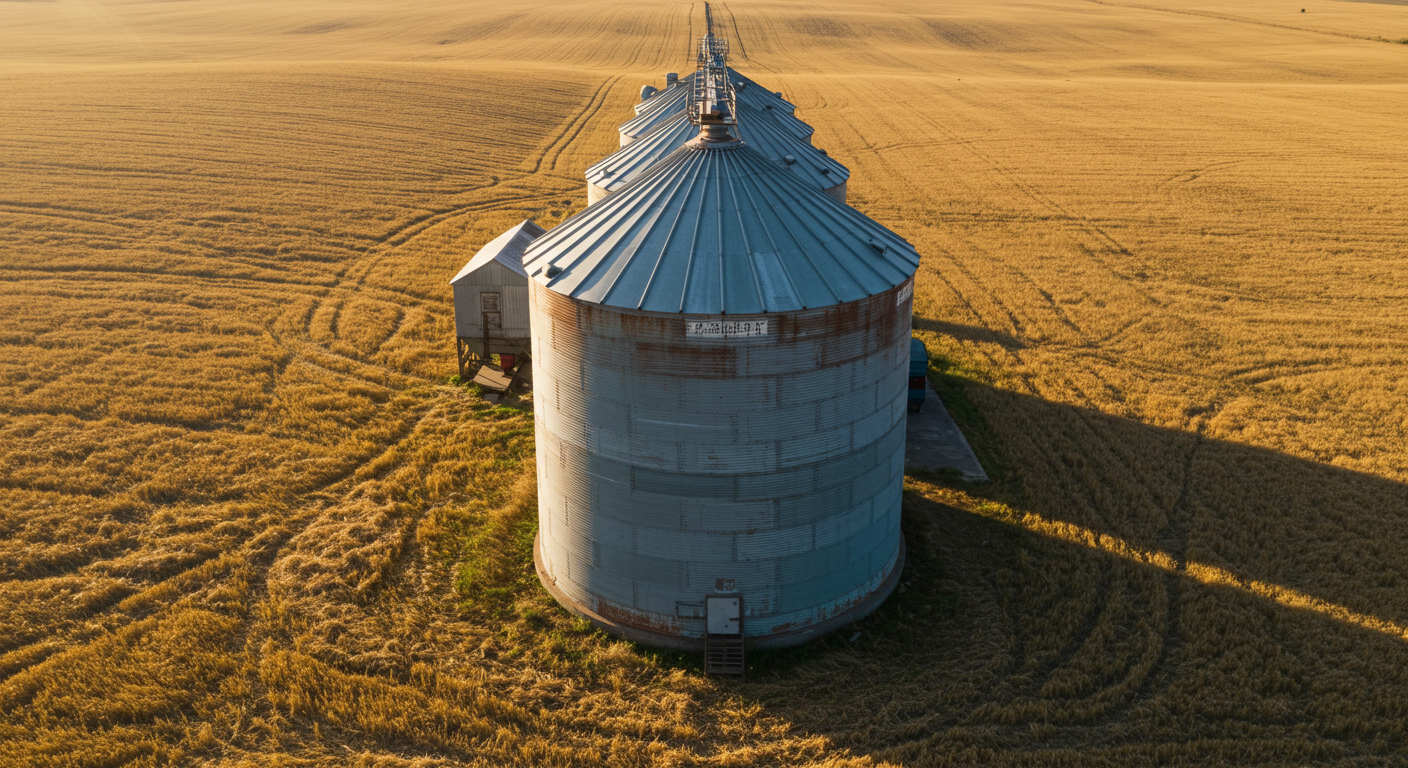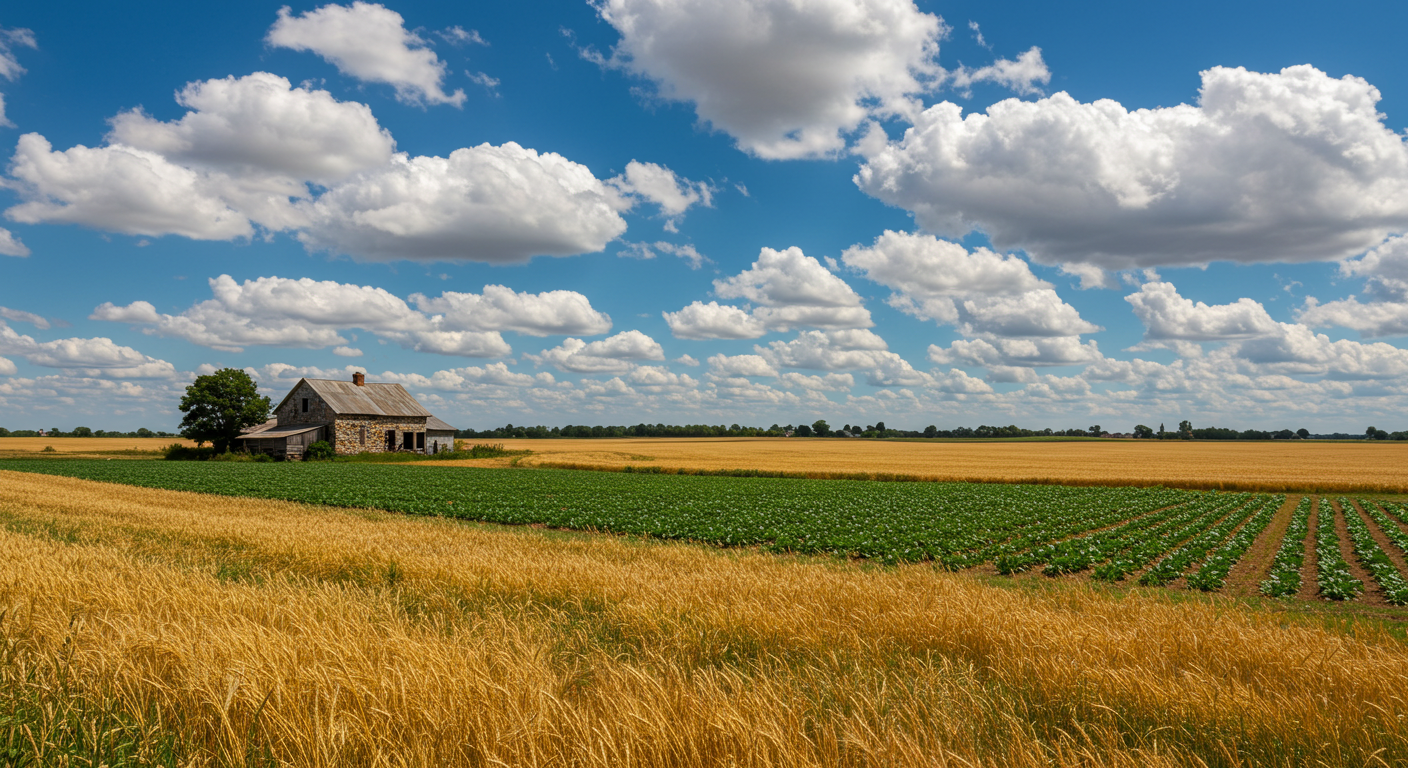Selling a piece of farmland is a transaction unlike any other. Farmland is a business, and its value is tied to productivity, government programs, and unique legal rights. This guide is for the seller who wants to handle their own sale and needs to know the specific details that make a farm sale a success.
1. Standing Crops and Harvest Rights
This is often the most critical and time-sensitive issue in a farmland sale. You must clarify who owns any crops that are in the ground at the time of closing.
- Who owns the crop? In most cases, the seller retains the right to harvest any crops planted before the closing date. This must be explicitly stated in the purchase agreement.
- Negotiating access. If the sale closes before the harvest, you’ll need a formal agreement that grants the seller access to the property to complete the harvest. This includes not just the physical act of harvesting but also the right to use access roads and transport equipment.
- Selling with the crop. A buyer might be interested in purchasing the crops along with the land. In this case, you will need to establish a fair market value for the crops and include it as part of the total sale price. This can also have specific tax implications, so consult with your accountant.
Many states have contract templates specific to farm sales that cover standing crops. For example, the Texas Farm and Ranch contract states that the seller has the right to harvest all growing crops until delivery of possession of the property.
2. Farmland Leases and Tenancy
A farm’s value can be heavily influenced by its existing lease situation.
- Verbal vs. Written Leases: Many agricultural leases are handshake agreements. Even without a formal written contract, state laws often recognize verbal leases and they may renew automatically. In Illinois for example, a farm tenant with an oral lease is usually considered a year-to-year tenant. By law, ending this type of tenancy still requires at least four months’ notice.
- Termination: You must understand the specific state laws for terminating a farm lease. In many areas, a tenant has the legal right to farm for the entire crop year, meaning you cannot simply terminate a lease mid-season to accommodate a new buyer.
- Impact on Property Value: A long-term, stable cash-rent lease can be a huge asset to an investor buyer, as it guarantees a consistent income stream. However, a farmer-buyer who intends to work the land themselves may see a long-term lease as a liability. Disclose any existing lease agreements to your buyer early and be prepared to negotiate based on their needs.
3. USDA and FSA Programs
A farm’s value is often tied to its participation in federal programs. You must be prepared to provide a new owner with the necessary information to continue this participation.
- FSA Farm Number and Base Acres: The land’s Farm Service Agency (FSA) farm number and associated “base acres” are critical to a buyer’s ability to enroll in federal commodity and disaster programs. These records should be readily available and transferred at closing, if applicable. If you’re unsure about this, check with your local FSA office to see if your property already has a number.
- Conservation Reserve Program (CRP): If your land is enrolled in CRP, you are receiving an annual payment from the USDA for taking the land out of production. You must clarify in the sale agreement whether the buyer will assume the CRP contract and continue to receive payments, or if the contract will be terminated.

4. The Specialized Farmland Appraisal
A farmland appraisal is vastly different from a residential one. A specialized appraiser looks at factors that are unique to agricultural production.
- Soil Quality: The appraiser will use soil maps and data to assess the land’s productivity. The quality and type of soil are paramount to a farm’s value, as superior soil leads to higher potential yields.
- Yield History: Providing historical yield data for crops grown on the property can be a significant factor in establishing a higher value for the land, as it provides proof of its productivity. Aim for yield data from the last 5 years.
- Infrastructure and Drainage: The condition and capacity of grain bins, outbuildings, and crucial field drainage tile are all factors in a farm’s value. The presence of well-maintained infrastructure and drainage is a major selling point.
Want to know how to prepare for your appraisal? Click to download a simple checklist, no email required.
5. Complex Agricultural Property Rights & Due Diligence
Selling farmland requires a comprehensive understanding of specific property rights that profoundly impact the land’s value and usability.
- Water Rights: This is a crucial right for agricultural land. You may hold riparian rights (if a water source runs through your property) or appropriative rights (a permit to use water). Buyers prioritize clear water access for crops or livestock, so be prepared to provide documentation.
- Mineral Rights: You must determine if your sale includes subsurface resources. If mineral rights (e.g., for oil, gas, or valuable ores) were previously sold, they are severed from the surface land. This distinction significantly impacts value and must be disclosed.
- Timber Rights: If marketable timber exists on your land, you must clarify whether the right to harvest it transfers with the land or was previously sold separately.
- Essential Document Checklist: In addition to the standard legal documents, be prepared to provide buyers with an extensive checklist of farm-specific information for their due diligence, including FSA Records, Historical Yield Data, and Water Well Logs. This transparency builds trust and can prevent delays.
6. Advanced Tax Strategies for Farmland Sales
The financial implications of a farmland sale are complex and demand early attention.
- Depreciation Recapture: If you have depreciated farm assets, the IRS requires you to “recapture” that depreciation as ordinary income upon sale. This is a common and important consideration for farm sales. For example – If a farmer purchases a $200,000 tractor and writes off the full amount through depreciation in prior tax years, then later sells it for $100,000, that $100,000 isn’t taxed as a capital gain. Instead, it’s “recaptured” and taxed as ordinary income - potentially leading to a much higher tax bill.
- 1031 Exchange: This strategy, often referred to as a “like-kind exchange,” allows you to defer capital gains tax if you reinvest the sale proceeds into a similar property. Critically, you must use a Qualified Intermediary to manage the transaction.
- Installment Sale: An installment sale allows the buyer to pay you over several years, which can spread out your tax burden and potentially keep you in a lower tax bracket.
Wondering about taxes on your farmland sale? Check what taxes you’ll owe with our capital gains calculator.
Conclusion
Selling farmland yourself may allow you to maximize your profit and maintain control over the process. By preparing for issues like standing crops, existing leases, and specialized legal rights, and by assembling a trusted team of professionals, you can navigate the complexities of farmland sales with confidence.
Please consult your financial advisor, accountant, real estate attorney, or tax professional. This article is for informational purposes and is not tax or legal advice.








